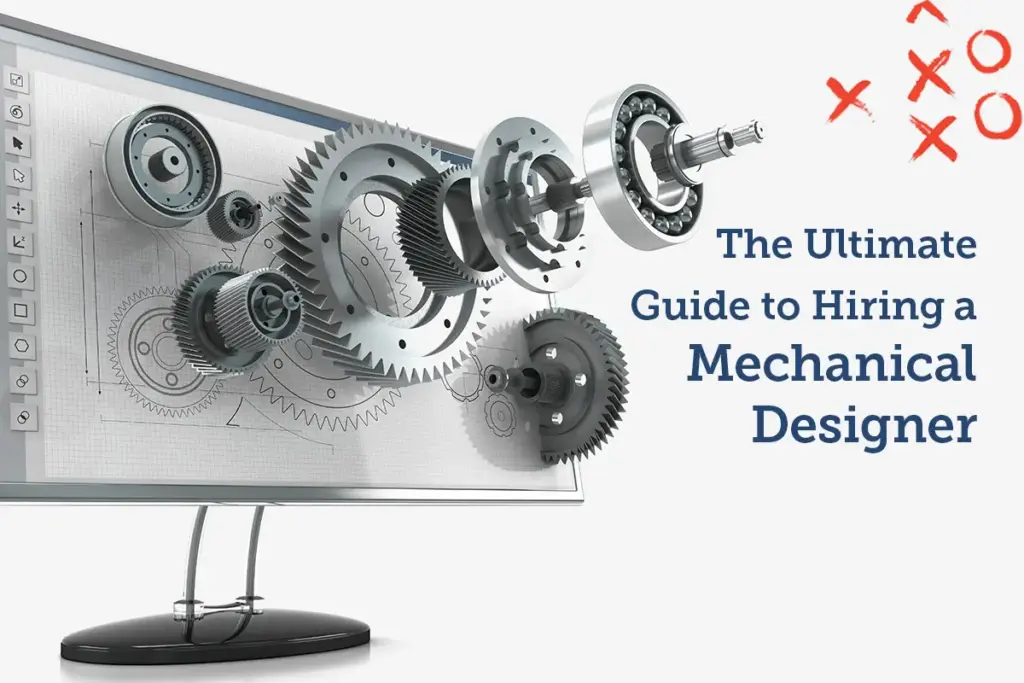The Ultimate Guide to Hiring a Mechanical Designer
Finding the right talent for your engineering team is crucial, especially when it comes to the pivotal role of a mechanical designer. A talented mechanical designer can be the linchpin in the development of your products, affecting everything from functionality to aesthetics. In this guide, we’ll walk you through the essential steps and considerations for hiring a top-notch mechanical designer who can elevate your projects to the next level.

Table of Contents
Understanding the Role of a Mechanical Designer
Before you start the process of hiring a mechanical designer, it’s important to understand what their role is and what skills and qualities are necessary for their success.
What Does a Mechanical Design Engineer Do?
A mechanical design engineer, often known as a mechanical designer, is responsible for conceptualizing and creating mechanical systems, components, and products. They apply the principles of mechanics, thermodynamics, materials science, and structural analysis to design objects that are reliable, efficient, and can be manufactured at a competitive cost.
Key Skills and Qualifications
When hiring a mechanical designer, look for the following skills and qualifications:
- A degree in mechanical engineering or a related field.
- Proficiency in computer-aided design (CAD) software.
- Strong understanding of engineering principles and material properties.
- Experience with product lifecycle management (PLM) software.
- Ability to work collaboratively with cross-functional teams.
- Excellent problem-solving skills.
Crafting the Perfect Job Description
A well-crafted job description is the first step in attracting the right candidates. It should clearly outline the responsibilities, required skills, and qualifications. Job listings should be frequently refreshed to fit the current state of your company and of the career overall (Harvard Business Review 2020).
Responsibilities
List the day-to-day tasks and long-term responsibilities of the mechanical designer. Be specific about the types of projects they will work on and the expectations for their role within the team.
Skills and Qualifications
Highlight the must-have and nice-to-have skills and qualifications. Differentiate between essential experience and areas where on-the-job training is available.
Company Culture and Benefits
Describe your company’s culture and the benefits of joining your team. A glimpse into the company’s values and mission can help attract candidates who are a good cultural fit.
The Interview Process
The interview process is your opportunity to assess the candidate’s technical skills, problem-solving abilities, and cultural fit.
Initial Screening
Conduct an initial phone or video screening to discuss the candidate’s experience and interest in the role. This step helps you determine if they meet the basic qualifications before moving forward.
Technical Interview
Prepare a technical interview that includes practical questions related to mechanical design. Consider giving a small design challenge or problem to solve to assess their skills in action.
Team Fit
Introduce potential hires to the team they’ll be working with. This can be an informal meeting or a part of the interview process, providing insight into how well the candidate might integrate with the existing team dynamics.
Evaluating Candidates
After the interview process, evaluate candidates based on a mix of their technical competencies, soft skills, and how well they fit with your company’s culture and values.
Technical Abilities
Review their portfolio of work, paying attention to the complexity of projects they’ve worked on and the quality of their designs.
Communication Skills
Assess their ability to communicate complex technical information clearly and effectively, both in writing and orally.
Problem-solving Skills
Consider how they approach challenges and if they can provide innovative and practical solutions to design problems.
Making the Offer
When you’ve found the right candidate, it’s time to make an offer. Be prepared to negotiate salary, benefits, and other terms of employment.
Competitive Compensation
Research industry standards to offer a competitive salary and benefits package that reflects the candidate’s experience and skills.
Onboarding Process
Outline the onboarding process and what the new hire can expect during their first weeks and months on the job. A clear onboarding plan can help ease the transition and set them up for success.
Retaining Talent
Once you’ve hired a mechanical designer, focus on retention by providing opportunities for growth and development.
Career Development
Offer continuous learning opportunities, such as workshops, courses, or attendance at industry conferences.
Recognition and Rewards
Implement a system to recognize and reward outstanding work, which can boost morale and encourage high performance.
Feedback and Evaluation
Regularly provide constructive feedback and performance evaluations to help them grow professionally and stay engaged with their work.
Conclusion
Hiring a mechanical designer is a significant investment in your company’s future. By understanding the role, creating a compelling job description, sourcing candidates from diverse places, conducting thorough interviews, and offering a competitive salary and growth opportunities, you can attract and retain a mechanical designer who will contribute significantly to your team’s success.
Remember that the hiring process doesn’t end with an offer letter. Continued engagement, professional development, and a positive work environment are key to keeping your mechanical designer motivated and productive.
By following this ultimate guide to hiring a mechanical designer, you’ll be well on your way to building a strong and innovative engineering team that can tackle any challenge and drive your business forward.
Need help finding a job?
Hunter is the best way to find a job.
Click Here






